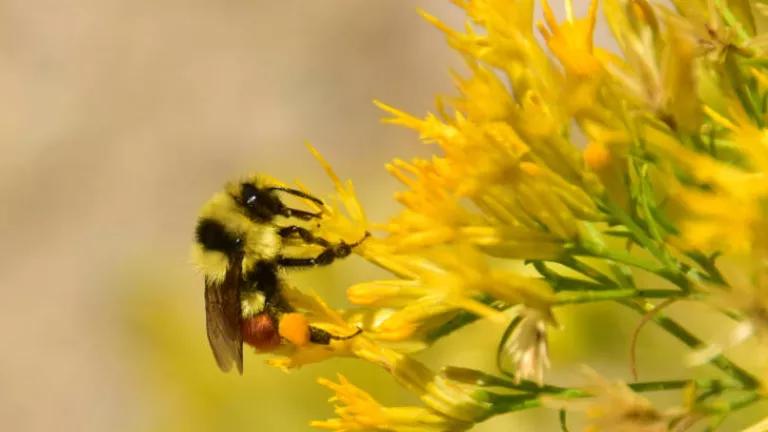
Two months ago, EPA announced its proposal to greenlight continued, widespread use of bee-killing neonicotinoid insecticides (“neonics”). Yesterday, NRDC submitted public comments opposing the disastrous plan.
Neonics are neurotoxic insecticides used throughout the country—including about 140 crops, lawns, and flower beds, as well as indoors and on pets. As the most popular pesticides in the U.S., neonics have been identified as a leading cause of mass bee losses and implicated in bird declines and the collapse of aquatic ecosystems. Neonics are an environmental “triple threat” because they are extraordinarily insect-toxic, highly mobile, and long-lasting in the environment.
Federal law requires EPA to prohibit pesticides that cause “unreasonable” harm to the environment, and under that law, the agency has been studying the costs and benefits of neonic use for more than a decade. Unlike the European Union and Canada, which have moved to ban outdoor uses of neonics to protect pollinators and aquatic ecosystems, EPA has fudged its analysis to permit business as usual. While our comments raise numerous problems with EPA’s analysis, three are particularly notable:
-
EPA fails to address the number one source of neonic contamination in the U.S. Seed treatments, where a crop seed is coated with a neonic pesticide before planting, are used on tens of millions of acres nationwide. When these treatments are used, less than 5% of the insecticide is actually absorbed by the plant, leaving the other 95% to contaminate soil, water, and other plants. EPA’s analysis vastly underestimates contamination from seed treatments. Relying on this faulty analysis, EPA proposes no limitations on seed treatment uses.
-
EPA exaggerates neonics’ benefits. EPA assumes that if a neonic use is popular, it must be beneficial. But that’s simply not true. For example, most farmers do not know what insecticides are on treated seed. This means farmers are not making an informed decision that insecticides are needed; they are simply using the seeds that are available, which happen to be treated with neonics. Indeed, studies show that seed treatment have negligible benefits for farmers in many circumstances, including the most common uses: corn and soybean.
-
EPA’s mitigation fails to protect the environment and human health. EPA identifies numerous “risks of concern” resulting from neonic use, leading them to propose some restrictions to lessen those risks. But these measures are sorely inadequate. For example, to address risks to farmworker health, EPA proposes to require farmworkers to wear double layers of clothing, gloves, or respirators. The problem is that weather conditions frequently make it difficult for farmworkers to wear this “personal protective equipment,” and respirators require a precise fit that is impossible for many workers to achieve. As a result, many farmworkers will continue to be exposed to harmful levels of neonics.

In light of these major shortcomings, NRDC has asked EPA to reconsider its approval of outdoor neonic uses. We’ve also asked EPA to revoke neonic food tolerances—i.e., the legally permitted levels of pesticide residues on fruits, vegetables, and other food—to protect human health.
If EPA grants our requests, it would effectively result in a ban on most agricultural neonic uses, protecting bees, birds, aquatic ecosystems, and families from these neurotoxic pesticides. If not, it may find itself defending its ill-advised plan in court. Check back for the latest developments as the story unfolds.

